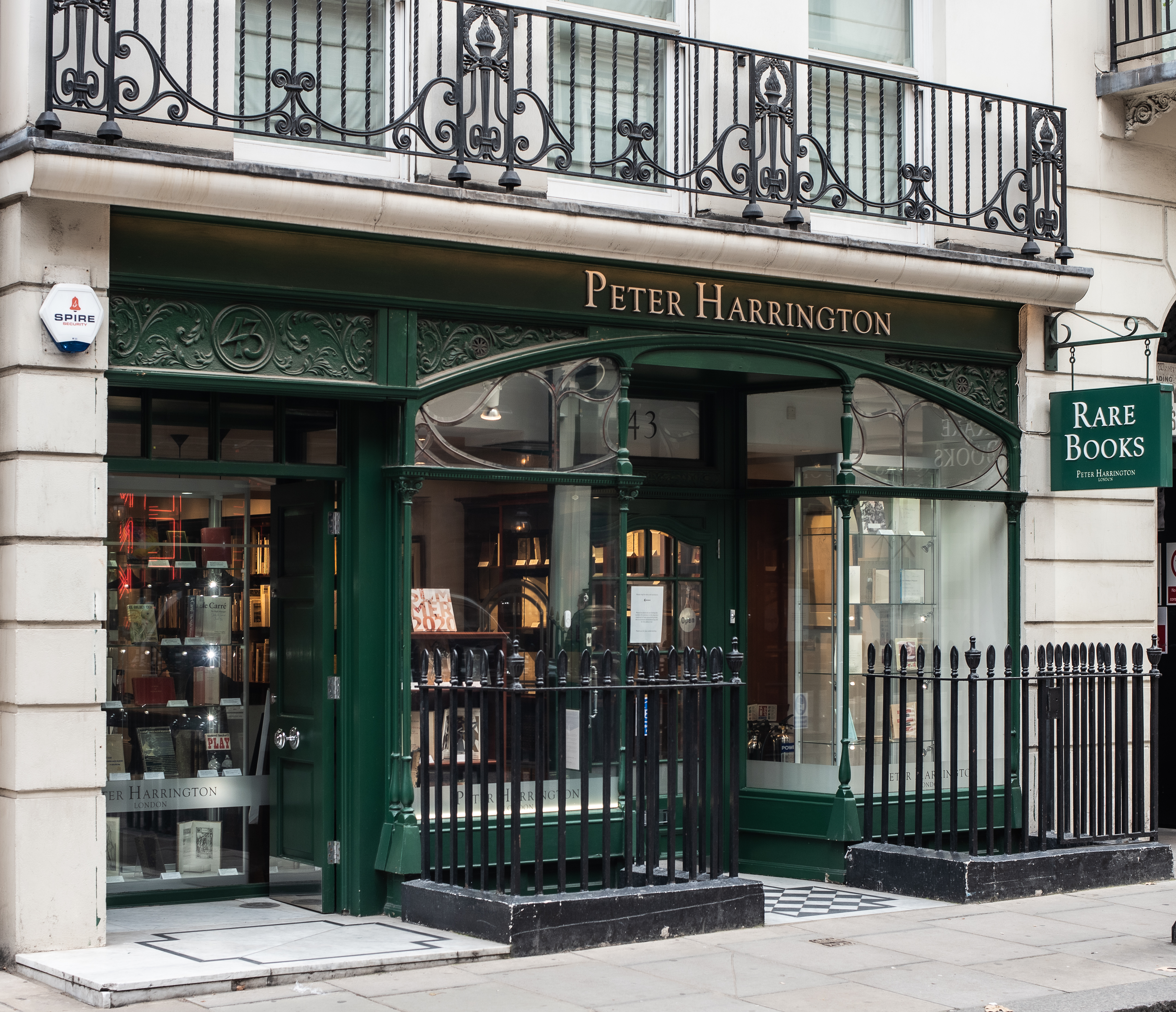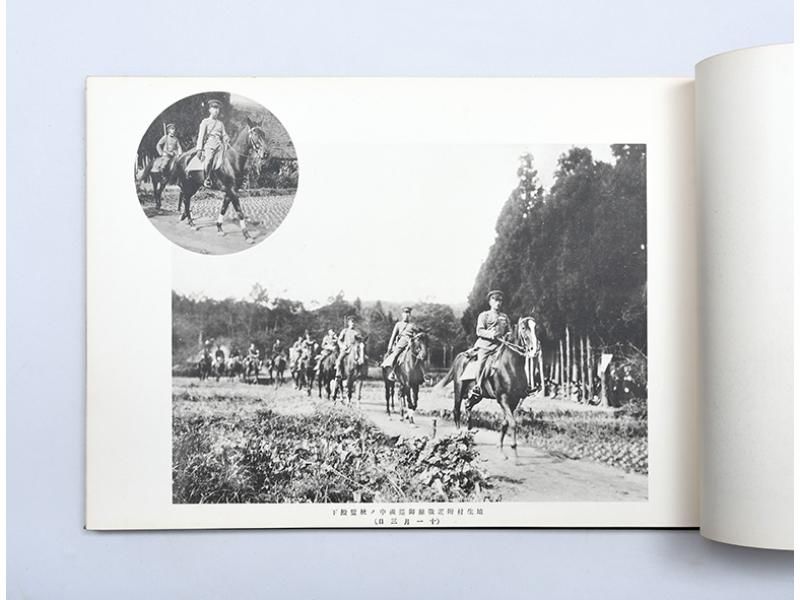Tokyo: Tokubetsu Daienshu Tokan-bu,, 1910-37. A collection of photobooks showing Japanese military exercises inspected by the Emperor First editions, first printings, of these photobooks of the annual Grand Military Exercise. The 1925 version contains a loose slip indicating it was a presentation copy from General Kawai Misao, chief of the general staff since 1923. The publishers spared no expense, employing Ogawa Kazumasa and even including two 3D photographs and the required red-blue glasses. From 1900 to 1945, the Japanese Army ran an annual co-ordinated military exercise called the Tokubetsu Daienshu ("Special Grand Manoeuvres"). The Emperor attended as the director and chief inspector of the exercise, along with high-ranking Japanese military leaders and foreign attachés from around the world. The drills lasted a number of days, culminating in a banquet for the troops at imperial expense. It was held in a different part of Japan each year and broadcast on the radio countrywide, which increased participation from different divisions, boosted morale, and inspired confidence and courage among the general public. These photobooks were produced to commemorate and publicize the event. They were published by the Special Manoeuvres Supervision Department with collotype photographs by Ogawa Kazumasa. Ogawa spearheaded the development of photography and photochemical printing in Japan. "While Commodore M. C. Perry opened Japan to the world in 1854, it was the distinguished and influential artist Ogawa, many years later, who put the country on display for all the world to see and appreciate" (Smith, p. 71). Each volume opens with a portrait of the emperor and the Chrysanthemum Seal, followed by photographs of individual soldiers, aerial views, the commanders' tent, and the banquet, as well as group photographs. Of the two anaglyph 3D photographs, the first is a landscape shot overlooking the battlefield chosen for the 1936 exercise, near the town of Yuni in Hokkaido. The second is an aerial photograph of that same field, showing the location of the command tent. This may be one of the earliest uses of this technology in Japan, and indeed the first photograph comes with instructions on how to use the 3D glasses correctly. General Kawai Misao (1864-1941) joined the Japanese army in 1886, and over the years was stationed in Taiwan, studied in Germany, fought in the Russo-Japanese War, and commanded the Kwantung Army in Manchuria. In 1923 he was made chief of the general staff, before retiring in 1926. The photobooks in this set are for 1910, 1911, 1922, 1924, 1925, and 1936. The 1924 version contains a loose errata slip as issued. In addition to the 1925 isntalment, those for1910 and 1911 may have also been presentation copies, as they do not have colophons. Six works, oblong folio. Gold vignette of the Imperial seal and collotype frontispieces of the Emperor to each, collotype photographs throughout (4 folding, 2 in 3D with glasses), some with tissue guards, 3 maps in red and blue (2 folding); text in Japanese and English, some colophons stamped in red as issued. Original blue, green, and brown cloth, 1911 works with black sheep backstrip, spines of 1910 and 1911 works decorated in gilt, front covers lettered and some blocked in gilt, back covers stamped with cherry-blossom vignette and some blocked in blind, linen hinges, speckled endpapers in varying colours, edges gilt. Spine of 1911 work worn, overall extremities rubbed, covers lightly scratched and marked, endpapers creased in some vols, some offsetting, light toning and foxing: a very good set. Bardwell Smith, Every Book, a Tale: Selections from Special Collections in the Laurence Mckinley Gould Library of Carleton College, 2010.
















